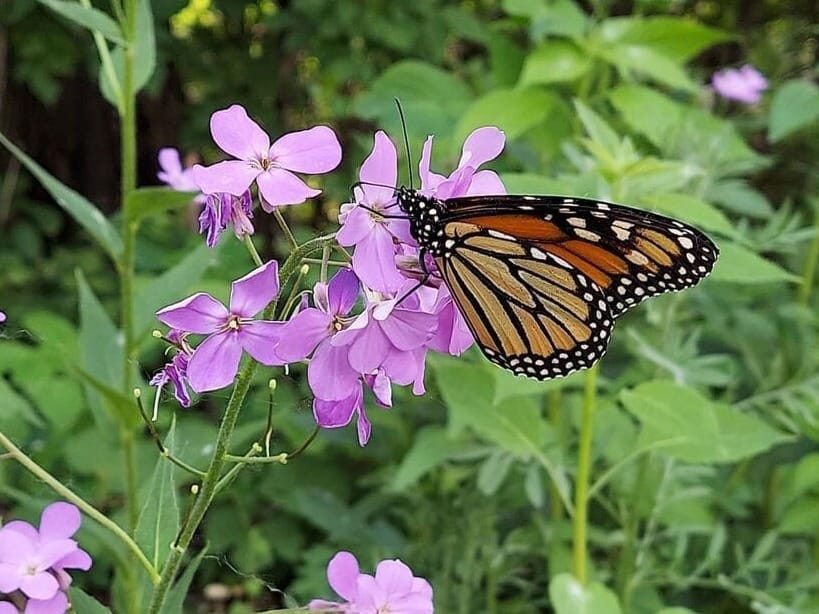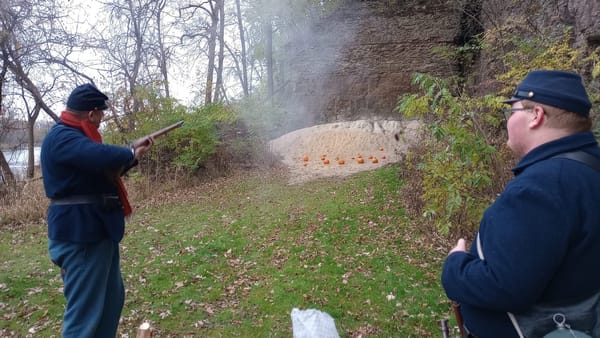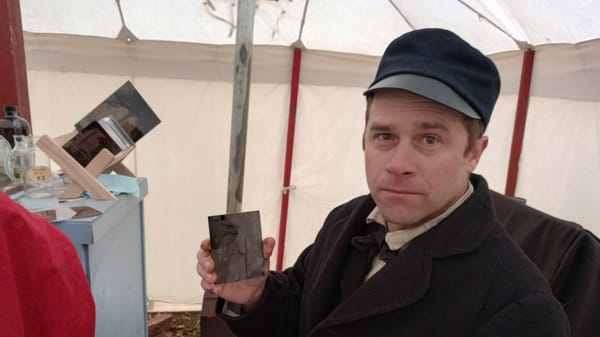Invasive plants are invading again this spring
Invasive plants look and smell nice, but they are seizing part of farthest northern Winnebago County, Illinois.

Garlic mustard (Alliaria petiolata), one of Illinois's most invasive plants, is appearing once again, in a yard or flower bed near you. According to Ryan Pankau of Illinois Extension, garlic mustard releases allelopathic chemicals into the soil. That's a fancy way of saying that native wildflowers and other plants don't grow well around garlic mustard. Furthermore, a single plant can produce up to 7,000 seeds - if not pulled up before it produces seeds in May. Local conservation groups often invite the community to help out at "garlic mustard pulls" around this time of year. Fortunately, if you grab it near the base, garlic mustard is easy to pull up by the roots, especially after a rain. Pankau says his kids love to pull it. It has a rich garlicky smell.
Garlic mustard is easy to recognize by its white flowers, but since flowers make seeds and seeds make weeds, you may not want to wait until the flowers appear. Garlic mustard is one of the first plants to come up in the spring, especially along the edges of the yard or fence, since it prefers not to be disturbed by mowing or gardening. But this year, it may not have come up until recently. It's a biennial, so it comes back from the roots next year, if you don't pull up the roots.
So where did this troublesome plant come from, if it's not native to Illinois? Unfortunately, our immigrant ancestors in the 1800’s brought it from Europe on purpose - because they liked to eat it. And it's so economical and plentiful! As you would guess from the name, the leaves taste like garlic and like mustard greens. The Edible Wild Foods website tells you all you need to know about garlic mustard: eating it may help you lose weight, protect your heart, lower your cholesterol, and even prevent cancer. Their website lists several recipes, including Garlic Mustard Horseradish, Garlic Mustard Pesto, Garlic Mustard Stuffed Mushrooms, Wild Mustard Pesto, Sesame and Wilted Green Saute, and Wild Pizza. The greens taste best before the flowers appear, but the roots and pods are also edible.
Some year, can we organize a garlic mustard cook-off? If you can't beat it, eat it.
A cousin of garlic mustard, dame's rocket is perhaps the prettiest wildflower of the year and is already returning to the Stateline area. But it has been spreading across America for almost four centuries. Like its cousin, this biennial is a powerful competitor with native plants for water and nutrients. Like garlic mustard, dame's rocket seems able to suppress the growth of other plants except for... garlic mustard.
And like garlic mustard, dame's rocket is edible. Its young leaves make a flavorful salad green, though more pungent than arugula, another relative which is also called "rocket." And it's high in Vitamin C. It becomes more fragrant after sunset - it's sometimes called mother-of-the-evening. (It's rumored to be an aphrodisiac).
Originally from Eurasia, dame's rocket is often called wild phlox. But you can tell it's not our native phlox because it has four petals, not five. Real phlox blooms in late summer, not now.
If you can bear to pull up these lavender (or white) flowers, pull them by the root (like garlic mustard), or they will grow back. If you can't bear to do that, cut down the shoots and bag or burn them before they go to seed. Dame's rocket produces a lot of seeds, and the skinny pods can shatter (scatter) their seeds when dry, even after the plant is pulled up.
The Illinois Nature Preserves Commission reports up to 48 plants per square meter, up to 5,000 seeds per plant, and a 98% germination rate. Wow. It can host the white cabbage butterflies that eat garden plants as well as viruses that infect garden plants. Feed it to your goats, if you have goats.
In Illinois, dame's rocket isn't legally classified as an invasive pest, but it's restricted in four other states, including Wisconsin, and in one Canadian province. The Ohio Department of Agriculture includes it with 37 species that "cannot be sold, propagated, distributed, imported or disseminated within the state." But it's still sold in "meadow in a can" wildflower mixes, and at least one website can't seem to make up its mind about it: it tells you how to grow dame's rocket, how to eliminate it, and where to buy more. If you want to grow it, you could grow it in a container. Of course, in Europe and Asia, it's not considered invasive - it's a native there.
This article is based on stories we first published on Apr 13, 2021 and May 29, 2021.





